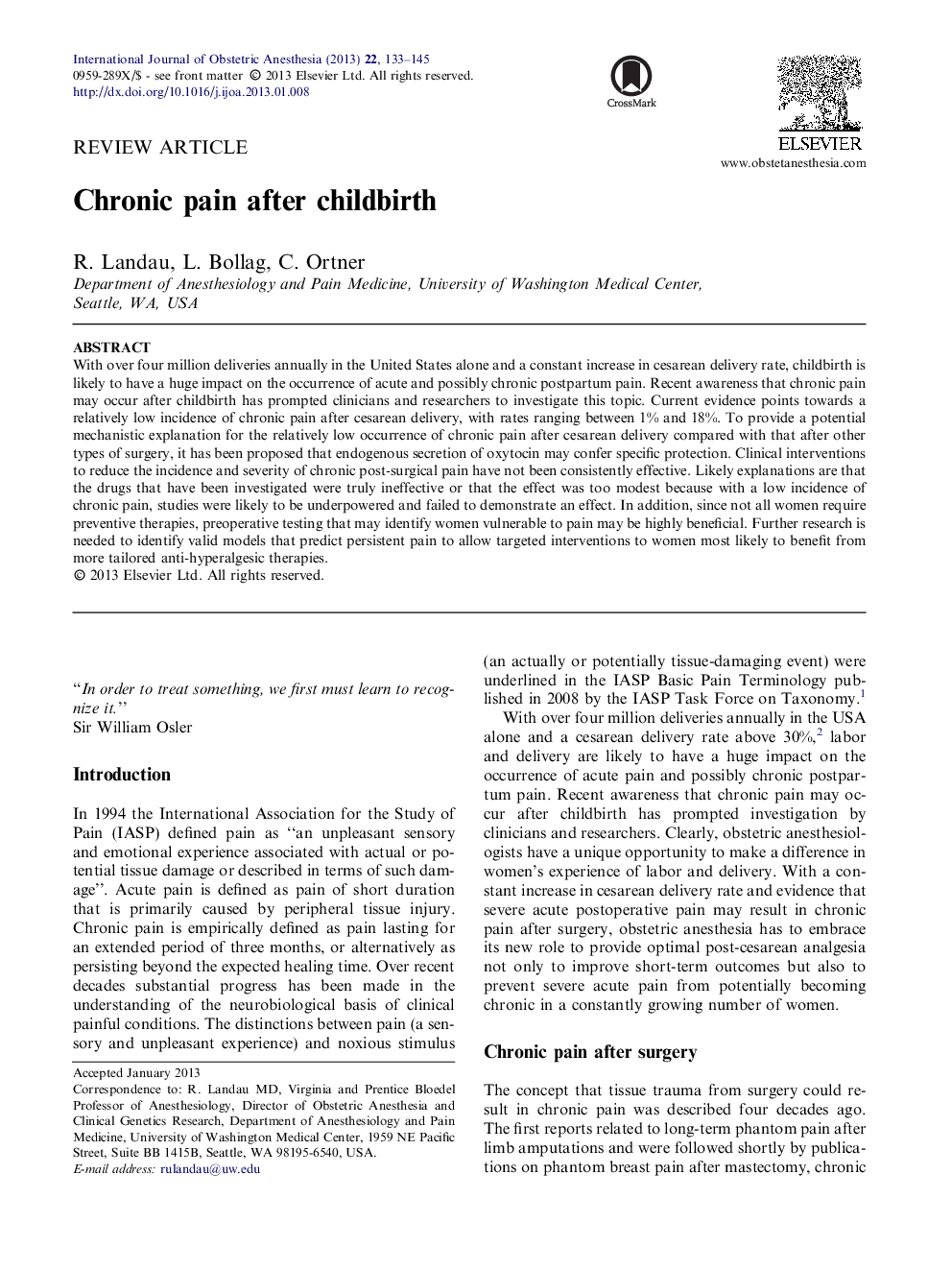| Article ID | Journal | Published Year | Pages | File Type |
|---|---|---|---|---|
| 2757841 | International Journal of Obstetric Anesthesia | 2013 | 13 Pages |
With over four million deliveries annually in the United States alone and a constant increase in cesarean delivery rate, childbirth is likely to have a huge impact on the occurrence of acute and possibly chronic postpartum pain. Recent awareness that chronic pain may occur after childbirth has prompted clinicians and researchers to investigate this topic. Current evidence points towards a relatively low incidence of chronic pain after cesarean delivery, with rates ranging between 1% and 18%. To provide a potential mechanistic explanation for the relatively low occurrence of chronic pain after cesarean delivery compared with that after other types of surgery, it has been proposed that endogenous secretion of oxytocin may confer specific protection. Clinical interventions to reduce the incidence and severity of chronic post-surgical pain have not been consistently effective. Likely explanations are that the drugs that have been investigated were truly ineffective or that the effect was too modest because with a low incidence of chronic pain, studies were likely to be underpowered and failed to demonstrate an effect. In addition, since not all women require preventive therapies, preoperative testing that may identify women vulnerable to pain may be highly beneficial. Further research is needed to identify valid models that predict persistent pain to allow targeted interventions to women most likely to benefit from more tailored anti-hyperalgesic therapies.
